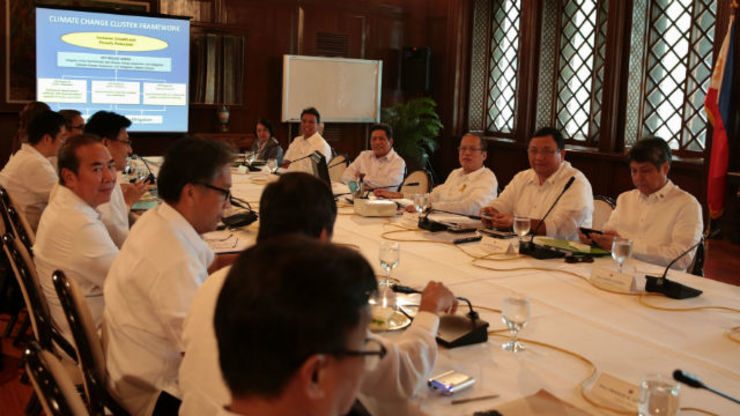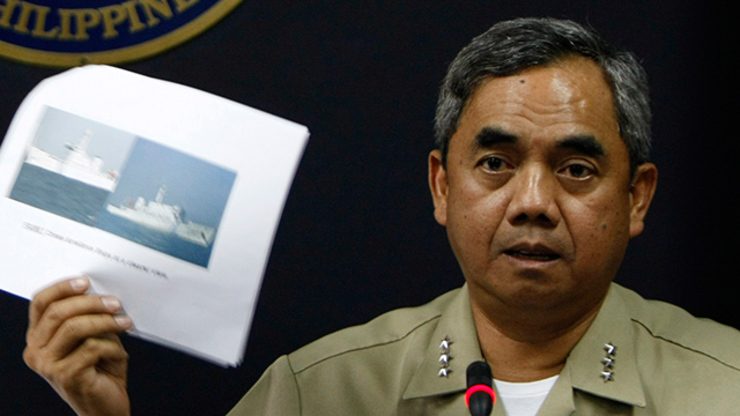SUMMARY
This is AI generated summarization, which may have errors. For context, always refer to the full article.

MANILA, Philippines – The Philippines’ disaster management chief Alexander Pama admitted Wednesday, November 5, that his agency needed a boost in capacity, capability, and credibility, but stressed that disaster preparedness is also the business of every Filipino.
“Disaster preparedness must be practiced at the community level. Disaster risk response and management (DRRM) is not a trend nor a passing interest. It should be a way of life and everyone can and should do something,” he said.
Pama, who heads the National Disaster Risk Reduction and Management Council (NDRRMC), delivered the 13th Jaime V. Ongpin (JVO) annual memorial lecture at the Ateneo de Manila University on the theme of shifting paradigms in confronting disasters.
Pama, who is also undersecretary at the Office Civil Defense (OCD), said the biggest challenge in building resiliency in the Philippines is that people have not yet “understood and acknowledged that DRR is the new norm.” (READ: Can new disaster management chief Pama ‘rescue’ NDRRMC?)
“People have yet to accept that, first and foremost, they are responsible for their own personal well-being in times of disasters. There is a need to change the mindset that you as an individual will not be a victim of disasters,” he added.
Pama lamented that in a recent city-wide earthquake drill held in Manila, many complained because of the traffic jam it caused instead of recognizing the need to prepare for such disasters.
“When we hold drills, people get angry because of the hassle. But when a disaster strikes, they become even angrier. Individuals should participate in drills and trainings, and know the hazards in their community and where the evacuation areas are located,” said Pama.
‘Needed’ changes on government side
Pama said institutional changes are also needed in both national and local government agencies.
“Institutionally, our challenge lies with the national government agencies (NGAs) that mostly viewed their respective roles in their individual functions. Collectively, they need to be more informed so their role in the new paradigm is clearly defined, enabling them to expeditiously deliver their services and responsibilities in DRRM,” he added.
Local government units (LGUs), Pama said, are at the forefront of spearheading community-level preparedness.
Despite the passage of Republic Act 10121 in 2010 – which require LGUs to set aside at least 5% of their estimated revenue from regular resources to support pre-disaster preparedness programs and post-disaster activities – some cities and municipalities do not devote resources to their DRRM programs.
“There is still a prevalent and mistaken notion that DRRM is a national government responsibility. LGUs continue to rely on the national government for assistance in times of disasters. It is understandable that some LGUs cannot do it on their own, especially the less progressive ones that are restricted by their human and budgetary resources,” he said.
“There are LGUs, however, that are more than capable of undertaking such programs that opted not to prioritize DRRM or merely comply with the minimum basic requirements without implementing concrete initiatives on building resiliency and ensuring security,” he added.
Internal OCD challenges
Prior to his appointment as the country’s disaster management chief, Pama served as the Flag Officer in Command of the Philippine Navy before he retired in December 2012.
He said the key to strengthening any organization is to build up 3C’s – capacity, capability, and credibility. He said the NDRRMC was “so wanting” for all 3 areas.
Pama said the OCD has limited capacity and capability to cover the national, regional and local concerns. “I have discerned that we are operating in an environment that is no longer aligned with emerging demands of the NDRRM system. What we need in OCD now is a capability and credibility surge.”
The retired vice admiral emphasized credibility should be the starting point and most important of the 3C’s.
“Credibility is a matter of trust. For trust to be regained, it is not just a matter of matching words with actions. We are making sure that despite all the givens and limitations, we are committed to implement credible and sustainable reforms,” Pama said.
He added: “People start to listen when you have proven that you are serious, that you mean business and that you want to save as many lives as possible.”
‘Paradigm shift’

Despite the many challenges facing the government, Pama said the Philippines, in general, has shifted from a reactive to a more proactive view on disaster management. He added the government is focused on 4 thematic areas: prevention and mitigation, preparedness, response, and recovery and rehabilitation.
Each thematic area is headed by a department or agency that, in the recent years, has adopted new strategies:
- Prevention and Mitigation – The Department of Science and Technology (DOST) and the Department of Environmental and Natural Resources (DENR) have heavily invested in weather forecasting, risk assessment, and hazard mapping technologies to reduce the impact of disasters, according to Pama.
- Preparedness – The Department of the Interior and Local Government has drawn up a Local Government Preparedness System and recently released a guidebook for actions to be taken by local executives in light of impending disasters, a DRRM playbook for LGUs.
- Response – “The Department of Social Welfare and Development has undertaken a number of game-changing systems and processes to improve and optimize the delivery of basic services required in response operations during and after a calamity,” Pama said.
- Recovery and Rehabilitation – “We have adhered to the build back better principle. We have taken steps to build resilience across various sectors of affected areas including social, economic, physical, and institutional help.”
Systematic problems
Ateneo School of Government Dean Antonio La Viña said that the country’s current DRRM governance system is “a disaster in itself.”
“The design of the NDRRMC, which is a coordination body with very little power and budget, destines it to be a failure. Even a great leader like Admiral Pama, will face insurmountable obstacles for the achievement of its mission,” La Viña wrote on Rappler.
Pama agreed with La Viña’s sentiments and admitted that there are still gaps in the 4 thematic areas. (READ: New Senate bill seeks to create new DRRM agency)
“The biggest gap is in the institutional capability for recovery and rehabilitation. The repeated creation of task forces for recovery after major disasters is a tell-tale sign of the need for us to come up with a more responsive recovery and rehabilitation framework plan. We need more permanent rather than ad hoc solutions,” he said.
Started in 2001, the JVO annual lecture series aims to raise the awareness of the business sector about national development issues so that the business community can actively participate in nation building. – Rappler.com
Add a comment
How does this make you feel?
There are no comments yet. Add your comment to start the conversation.